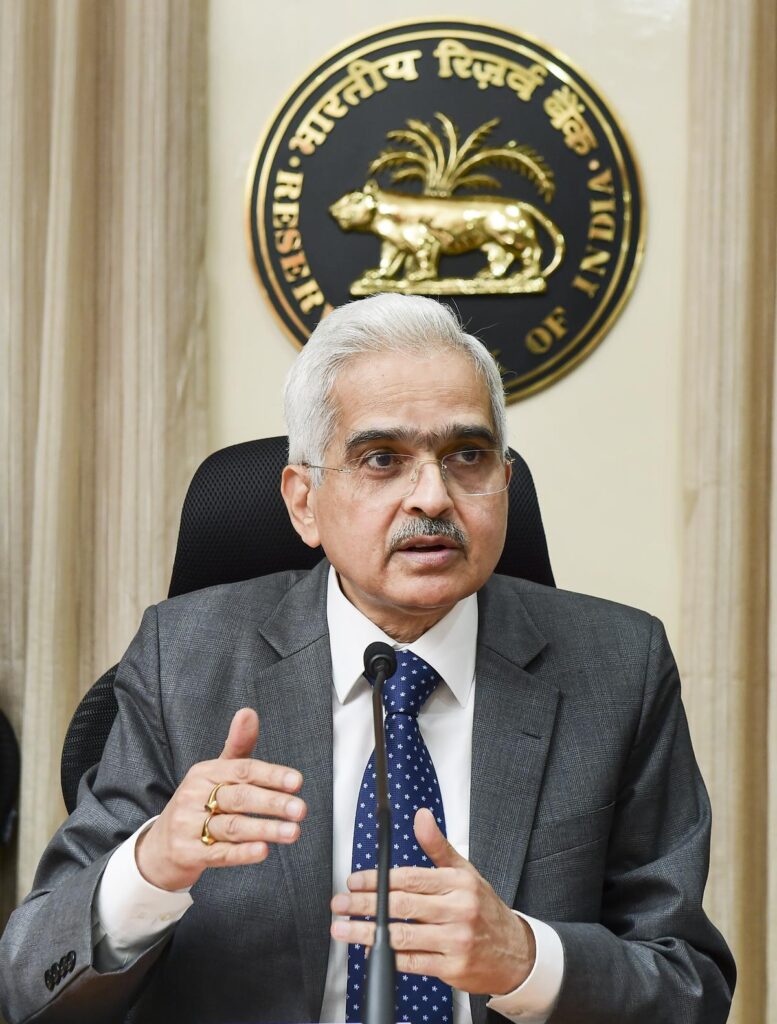Cryptocurrency has some very significant intrinsic hazards for our financial and macroeconomic stability,” Governor of the Reserve Bank of India, Shaktikanta Das, stated
According to Reserve Bank of India Governor Shaktikanta Das, private cryptocurrencies will be to blame for the upcoming financial disaster. Governor Das asserted at the Business Standard BFSI Insight Summit that that private cryptocurrencies have no “underlined value.” “for macroeconomic and financial stability, and they present concerns.
We have been emphasising the significant threats that cryptocurrency poses to the stability of our macroeconomic and financial systems. after viewing the most recent FTX show. I don’t believe we need to say anything further “Governor of the RBI remarked.
Governor Das added that the primary worry with cryptocurrencies is that they have no foundation at all, unlike any other asset or product.
Das claimed that since private cryptocurrencies don’t accept the central bank’s currency or the rules that govern the financial sector, they got their start by avoiding the system in order to “destroy the system.” “…they want to get around and overthrow the system.”
Second, there is no underlining in cryptocurrency. Thirdly, all of it is speculation.
Governor Das emphasised the need to ban cryptocurrencies, saying that if they are allowed to develop, “mark my words, the next financial disaster will come from private cryptocurrencies.”
The governor of the RBI continued by describing the distinction between UPI and CBDC. He also discussed the value of digital currencies.
According to the governor of the RBI, CBDC is a “currency” in and of itself, whereas UPI is a payment method. Second, UP uses banks as intermediaries, whereas CBDC functions similarly to cash. According to him, the latter features an automated “sweep-in and sweep-out facility,” which allows users to return unused CBDC to their bank accounts after 24 hours.
Thirdly, CBDC is less expensive than printed notes, which require extensive logistics and high printing expenses.
Additionally, CBDC permits immediate money transactions between two nations. The “Currency of the Future,” according to Das, is CBDC.
Das was upbeat about the nation’s economic situation.
He stated, at the Business Standard-hosted BFSI Insight Summit 2022, that while India’s economy is fundamentally sound, external influences will inflict some “damage” in it.
The majority of the 70 fast-moving indications that the RBI monitors, according to him, are in the “green box.”
He added that the issues are in the external sector, which is plagued by recession-related anxiety or obvious evidence of slowing global growth. The effects of foreign demand will “dent” the economy, he said.
The RBI recently decreased its earlier 7% growth prediction for FY23 to 6.8%.
In order to control the out-of-control rate of inflation, the government and the central bank have taken a “highly synchronised strategy,” according to Das.
According to the RBI Governor, base effects make the two growth numbers appear different even if there is no significant difference between deposit and credit growth in absolute terms.
CBDC (Central Bank Digital Currency) – A central bank will issue currency notes in the form of digital currency, or “Central Bank Digital Currency” (CBDC). The majority of central banks worldwide are investigating the issuance of CBDC, although the main drivers behind it depend on the particular needs of each nation.
This Concept Note addresses the goals, options, advantages, and hazards of issuing an electronic CBDC in India (digital Rupee). In addition to the present types of money, the e will offer another choice. It is essentially identical to banknotes, but because it is digital, it is probably simpler, quicker, and less expensive. It also offers all the advantages for transactions that other digital payment systems do.
This Concept Note was released with the intention of raising awareness of CBDCs in general and the advantages of the digital Rupee in particular. The Note explains the Reserve Bank’s strategy for introducing the digital rupee. The two main goals of the Reserve Bank’s strategy are to produce a digital rupee that is as similar to paper money as possible and to smoothly implement the introduction of the digital rupee.
The Concept Note also covers important issues including technology and design choices, potential applications for digital rupee, issuance procedures, etc. It analyses privacy concerns and looks at how the adoption of CBDC will affect the banking system, monetary policy, and financial stability.
Soon, the Reserve Bank will offer restricted e-pilot launches for particular use cases. This letter is intended to promote a greater knowledge of the digital rupee and assist the general people in becoming ready to use it.
Being a sovereign currency, CBDC has special advantages over central bank money, such as integrity, trust, safety, and liquidity. Among other reasons, lowering operational costs associated with physical cash management, promoting financial inclusion, bringing resilience, efficiency, and innovation to the payments system, enhancing the efficiency of the settlement system, fostering innovation in cross-border payments, and giving the general public access to uses that private virtual currencies can offer without the associated risks are the main reasons for investigating the issuance of CBDC in India. In rural areas, using CBDC’s offline capability would be advantageous because it would increase availability and resilience even in the absence of mobile service or electricity.
Private virtual currencies are in stark contrast to the traditional understanding of money. Due to the lack of an inherent worth, they are not commodities or claims on commodities. Private cryptocurrencies have quickly exploded in popularity in recent years, challenging the core idea of money as we currently understand it. Cryptocurrencies, which tout the advantages of decentralisation, are heralded as a breakthrough that will bring in decentralised finance and upend the established financial system. Cryptocurrencies are built from the ground up to avoid the established, regulated intermediation and control mechanisms that are essential to maintaining the integrity and stability of the monetary and financial eco-system.
The Reserve Bank of India has consistently highlighted numerous hazards associated with cryptocurrencies in its capacity as the custodian of the monetary policy framework and with the responsibility to ensure financial stability in the nation. Due to their detrimental effects on the financial sector, these digital assets threaten the stability of India’s finances and macroeconomic system. A larger spread of cryptocurrencies also has the potential to limit the ability of the country’s monetary authorities to control its monetary system and set its monetary policy, which might seriously jeopardise the stability of the nation’s financial system.
In this situation, the central bank has a duty to offer its citizens risk-free central bank digital money that will give consumers the same experience as dealing in currency in digital form, free from the dangers of private cryptocurrencies. By avoiding the negative social and economic effects of private virtual currencies, CBDCs will ensure consumer protection while providing the public with the benefits of virtual currencies.


